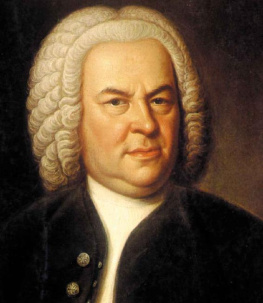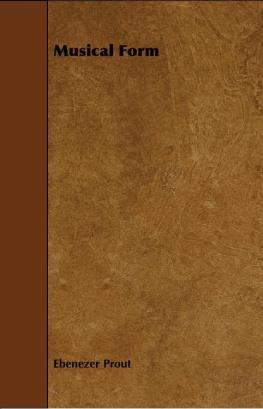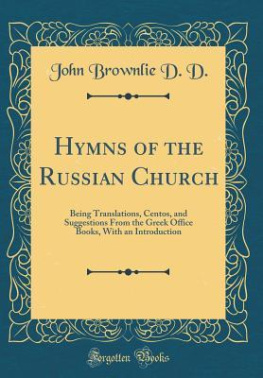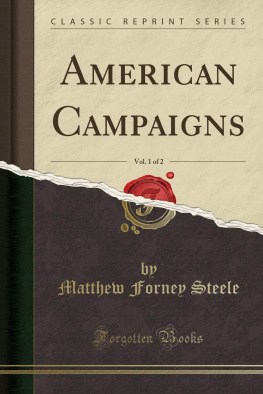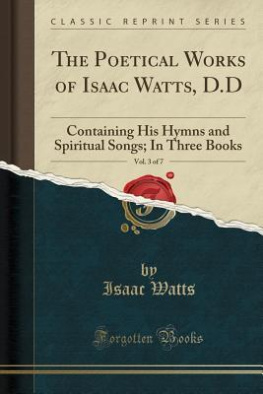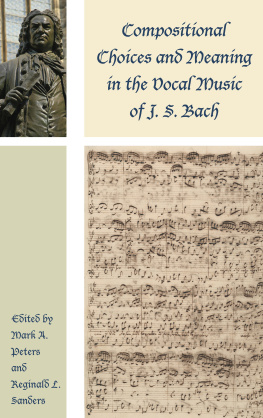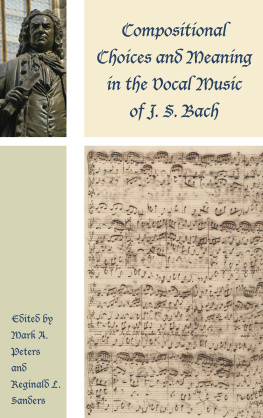This book made available by the Internet Archive.
EDITOR'S PREFACE.
THE present handbook, on which my revered father was working enthusiastically up to the very day of his death, is designed to supply a concise analysis of Bach's immortal " Forty-eight," for the use of students who are desirous of obtaining some insight into their construction. Much has already been written on the subject, and from many standpoints; but I am unacquainted with any book that serves the purpose which has been here kept in view, of pointing out the essentials of the form of the fugues, systematically arranged, and unencumbered by technical details of harmony on the one hand, and by flights into the realms of poetic fancy or of psychological perceptions on the other hand.
The analyses which had been finally arranged for the press, by Dr. Prout, have been deemed sacred from any editorial interference. The arrangement of the rest has been on similar lines from his very copious manuscript notes, and my work has only been that of selecting and editing. The author, himself, had been contemplating the desirability of some slight curtailment, wherever possible, in order to keep the book within strictly moderate dimensions. I have, therefore, rigorously excluded whatever could be spared without detriment, from those analyses for the arrangement of which I am responsible. It was not, however, an undesirable thing that the first few should be somewhat more extended than the later ones, as they give
the opportunity to enunciate certain generalisations which the careful reader can afterwards apply for himself.
No study of these wonderful masterpieces can be exhaustive. There is much of constructive beauty and meaning yet awaiting discovery in them, and the student should endeavour not merely to find what he is told to look for, but also to make original explorations for himself. Those who desire fuller guidance, especially on the evolution of the rhythmic figures, motives and other smaller sections, may find it in Dr. F. Stade's analyzed edition of the fugues, "J. S. Bach, Die Fugen des wohltemperirten Klaviers parti turmassig dargestellt," etc.; Riemann's " Katechismus der Fugen-Komposition" also gives an abundance of valuable and suggestive criticism, including much that is aesthetic more than technical. Van Bruyck's older "Technische und asthetische Analysen des Wohltemperirten Claviers" is very largely concerned with the last-named aspect of the subject. Both Riemann and Van Bruyck deal with the preludes as well as the fugues.
There remains only the pleasing duty of returning hearty thanks to my friend Mr. R. Orlando Morgan for the warm interest he has throughout manifested in the work, and for much valuable help and advice in connection with the arrangement of the matter.
LOUIS B. PROUT. LONDON, January, 1910.
INTRODUCTION.
The collection of preludes and fugues commonly known as " Das Wohltemperirte Clavier " consists in reality of two complete and separate works, each containing one prelude and fugue in each of the major and minor keys. The first, to which Bach himself gave the name which is now attached to both series, was completed in 1722, and owed its genesis to the controversy of the period on the question of equal versus unequal " temperament": an acoustical subject into which we need not here enter, beyond stating that the old methods of tuning sacrificed the "extreme" keys in the interests of precision of intonation in the simpler ones, whereas the present method distributes equally over the whole of the twelve semitones (or twelve " perfect" fifths) the slight deviations from absolute exactitude which are inseparable from our musical system, thereby reducing them almost to vanishing point. Bach demonstrates, what in our day seems the veriest commonplace, that by the aid of " equal temperament" it is possible to play in any key with equally good effect. The second collection, which was completed in 1744, was originally known, according to Marpurg, as "Twenty-four New Preludes and Fugues" ; but inasmuch as it illustrates, in common with the first series, the value of equal temperament, no objection can be urged against the inclusion of both under the common title.
Bach's part-writing, in the fugues, is as absolutely clear and definite as though each part were given to a separate voice or instrument. The student who desires to obtain a thorough insight into them could not possibly devise a better exercise than to write them out in score, *>., with each part on a separate staff. In any case he should number the bars in his edition, in order to facilitate
reference. In the few fugues which are not written as beginning at the commencement of a bar (Nos. n, 34, 36, 37, 48) we have reckoned the first complete bar as bar i. In the three-part fugues \ve have described the parts uniformly as treble, alto and bass; in the four-part ones as treble, alto, tenor and bass; and in the two for five voices (Nos. 4 and 22) we have regarded the additional one as another treble.
The text followed has been that of the Bach-Gesellschaft.
DEFINITIONS.
FUGUE. A contrapuntal composition (that is, with all the voices of separate melodic importance) founded on a concise theme called the " subject/'which is given out singly, and then according to certain rules, by each voice in turn, and subsequently developed. The form is an application of the " ternary " ; that is to say, three principal divisions are recognizable, usually according to the keys employed, but occasionally according to the methods of treatment. The divisions are not always quite sharply defined, but the general scheme holds good in practically every case.
SUBJECT. The theme on which the fugue is founded (but see 1 Answer"). If there are two or three subjects, the fugue is called a double or triple fugue.
ANSWER. The transposition of the subject, usually into the key of the dominant, given to the second voice which enters, as a companion to the subject (hence the terms " dux " and " comes/ sometimes used instead of subject and answer). The first entries of the remaining voices usually alternate between the subject and answer, but there are occasional exceptions. There are two kinds of answer. Real Answer is an exact transposition of the subject. Tonal Answer is one more or less modified according to the
exigencies of tonality ; Its principle is that a conspicuous dominant in the subject (or a modulation to the dominant key) is better answered by the tonic (or tonic key) than by the supertonic, wincii is only " secondary" in relation to the key. Hence certain notes are answered a fourth higher (or fifth lower) whereas in a real answer everything is copied a fifth higher (or fourth lower). In the later parts of a fugue, the distinction between subject and answer is not always maintained.
COUNTERSUBJECT. A counterpoint which accompanies the subject with more or less regularity. Of course, except in a double fugue, it does not accompany the first entry of the subject, but first appears with the answer. If the counterpoint which accompanies the answer is not recurrent, it is better not to describe it as a countersubject. In the "exposition" (see below) the countersubject is usually found in the voice which has just had the subject or answer.
EXPOSITION. The first giving out of the subject and answer by the several voices, together with any countersubjects and other incidental matter. Normally one entry is given to each voice. Not infrequently there is also a redundant entry, or second entry of the voice which led originally. Much more rarely, the entry of one voice is reserved for a later section of the fugue.
Next page
